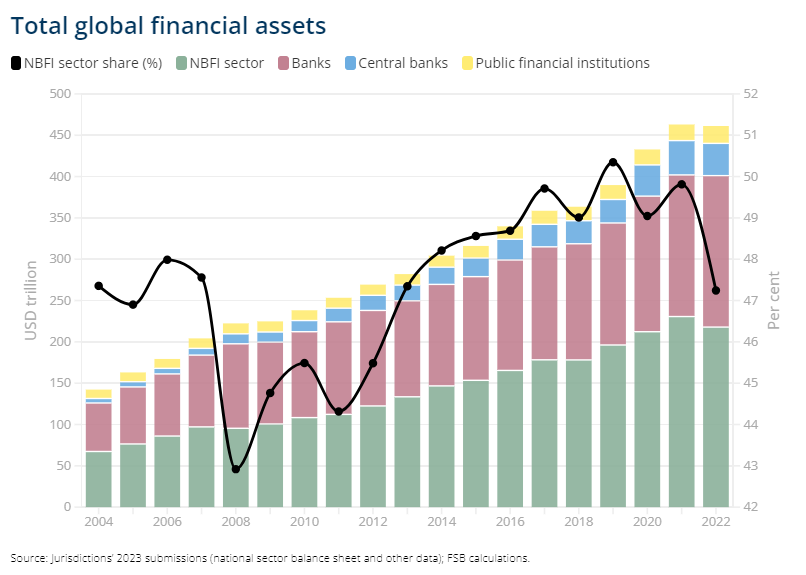Non-Bank Financial Intermediation
The non-bank financial intermediation (NBFI) ecosystem comprises a diverse set of financial activities, entities and infrastructures. Non-bank financial institutions – comprising investment funds, insurance companies, pension funds and other financial intermediaries – have different business models, balance sheets and governance structures, and are subject to distinct regulatory frameworks within and across jurisdictions. These institutions play an increasingly important role in financing the real economy and in managing the savings of households and corporates. They are a valuable alternative to bank financing and help to support real economic activity.
Nevertheless, non-bank financing may become a source of systemic risk if it involves maturity/liquidity transformation or leads to the build-up of leverage. The diversity and growing involvement of non-bank entities in credit provision has led to more interconnections, including on a cross-border basis, meaning that stress in the sector can be transmitted more widely to other parts of the financial system and to the broader economy.
The FSB has undertaken significant work to assess and address the risks from NBFI (formerly referred to as shadow banking) following the 2008 global financial crisis. The FSB created a system-wide monitoring framework to track developments in NBFI in response to a G20 Leaders’ request at the Seoul Summit in 2010. The objective of the monitoring exercise is to identify the build-up of systemic risks in NBFI and initiate corrective actions where necessary. Complementing this monitoring, the FSB has been coordinating and contributing to the development of policies to mitigate potential systemic risks associated with NBFI.
Monitoring
To assess global trends and risks in NBFI, the FSB has been conducting an annual monitoring exercise since 2011. The monitoring exercise starts by casting the net wide to take a view of assets across all financial sectors and then focuses on the subset of NBFI with increased potential for systemic risks and/or regulatory arbitrage. To arrive at the narrow measure, non-bank financial entities are classified into five economic functions (or activities), each of which involves bank-like financial stability risks (i.e. credit intermediation that involves maturity/liquidity transformation, leverage or imperfect credit risk transfer).
Policy work
In 2013, the FSB, working with standard-setting bodies (SSBs), developed policy recommendations to strengthen the oversight and regulation of non-bank financial intermediation. The policies, which were endorsed by the G20, focused on five areas and aimed to:
-
mitigate spill-overs between banks and the NBFI sector;
-
reduce the susceptibility of money market funds (MMFs) to “runs”;
-
improve transparency and align incentives associated with securitisation;
-
dampen procyclicality and financial stability risks associated with securities financing transactions such as repos and securities lending; and
-
assess and mitigate systemic risks posed by other non-bank financial entities and activities.
The COVID-19 pandemic placed the global financial system under considerable strain. Key funding markets experienced acute stress in March 2020 and public authorities needed to take a wide range of measures to restore market functioning and support the supply of credit to the real economy. The March turmoil underscored the need to further strengthen resilience in the NBFI sector.
The FSB’s Holistic Review of the March Market Turmoil sets out an NBFI work programme organised along three main areas:
-
Analytical and policy work to examine and, where appropriate, address specific issues that contributed to the market turmoil. This includes work on money market funds, open-ended funds, margining practices, USD funding and vulnerabilities in emerging market economies, and the liquidity, structure and resilience of bond markets.
-
Developing a systemic risk perspective in NBFI to enhance understanding of systemic risks in NBFI and strengthen their ongoing monitoring.
-
Developing policies to address systemic risks in NBFI, including by assessing the adequacy of current policy tools given the desired level of resilience for the sector.
This work is carried out within the FSB as well as by its member SSBs and international organisations, to ensure that relevant experiences and perspectives are brought to bear. Progress under the FSB’s NBFI work programme, including an overview of future work, is detailed in its annual progress report.
Read more:







